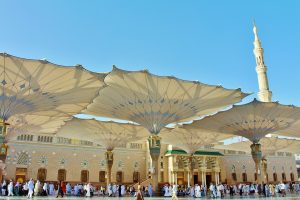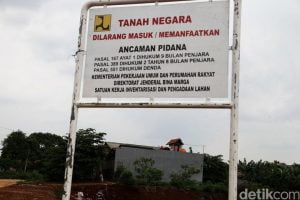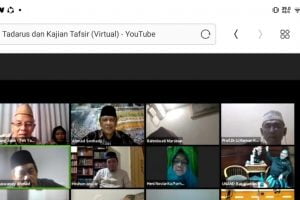
The victory of the Muslims over the Jews in the Khaibar War (Year 7 H/629 CE) ended the existence of the Jewish community in Medina. For Jews – after trying hard to defend their strongholds in Khaibar – there was no choice but to leave Khaibar to the Sham direction, leaving their fertile agricultural land. This sadness of the Jews was as a consequence of his arrogance in allying with Quraysh to destroy the Muslims in the Battle of Ahzab or the Battle of Khondaq (5H / 627 CE).
By the exit of the Jews from Khaibar, the Messenger of Allāh obtained the fa’i land as ghanimah in the Khaibar region, namely in As-Syiqq, Nathah, Al-Katibah, and Fadak. The fertile land of Jewish heritage automatically becomes state-owned land, where its management depends on the policy of the head of state, where Muhammad SAW was the head of state. Muhammad SAW divided the land in the four Khaibar areas into seventeen blocks. Then, for each block, Rasulullah SAW divided it into one hundred lots that mean that the land of Jewish heritage was divided into 1700 lots.
Then, Rasulullah SAW distributed the Khaibar land to the army and Muslim people in general; whereas the Prophet obtained merely 20% of the Khaibar Land as state-owned land. Among the Shohabah who obtained part of the Khaibar land were Ali ibn Abi Talib, Az-Zubayr ibn al-Awwam, Talha ibn Ubaidillah, Umar bin al-Khaththab, Abdurrahman bin Auf, Ashim bin Adhi from Bany Al-Aljan, Usaid ibn Ubaidillah, Umar bin al-Khaththab, Abdurrahman bin Auf, Ashim bin Adhi from Bany Al-Aljan, Usaid bin bin Al-Hushair, Al-Harith bin al-Khazraj, Na’im, Bani Bayadhah, Bani Ubaidah, Bani Hara from Bani Salimah, Ubaid bin As-Shiham, Saidah, Gifar and Aslam, An-Najjar, Harithah and Aus (Ibnu Hisyam , 2002).
By distributing the land of Khaibar to the Muslims individual, each people in Islam has the right to land, that is, he can own the land through gifts from the state, buy, or be given by other parties to him. This invalidated the pre-Islamic tradition, in which it is merely the chieftains – who had the above average of the strength – possessed the right of land, and the individual members of certain tribes must obey the rules set by the chieftain.
Maintaining Land Productivity
Indeed, in the Islamic perspective, each individual has the rights of the land. However, the farming land owners are obliged to maintain the productivity of the land. The Prophet asserted, “Whoever owns a piece of land, he should plant it. If you are reluctant to plant it, then give it to his brother. And if he is reluctant to give to his brother, then leave the land. “(NB ad-Darimi, quoted from‘ Ajjaj al-Karmi, 2012: 254).
In line with above deliberation, each individual has an obligation to fulfill basic needs for his family, such as clothing and food. For this purpose, the government also should give the full support for individuals to own land, and to be able to manage the land. If he fails to maintain land productivity, the Government will act to take over the land ownership and give it to other who has the ability to preserve the land productivity.
Reference
Ajjaj al-Karmi, H.A., 2012. Al-Idaroh fi ishril Rasulillah Shallallahu Alaihi Wa Sallam, Indonesian edition, translated by Utsman Zahid as-Sidany, Bogor: Pustaka Thoriqul Izzah.
Al-Muafiri, Abu Muhammad Abu Al-Malik bin Hisyam, 2003. Siroh Nabawiyyah Ibnu Hisyam, Indonesian edition, translated by Fadhli Bahri, Jakarta: Darul Falah




Pertanian memang sejak dahulu sudah ada, seiring perkembangan teknologi, cara tanam dan pola tanam mengalami perubahan dan pergeseran menjadi lebih baik. Jaman Rasulullah sudah di atur sedemikian rupa untuk kemaslahatan ummat (rakyat) nya.
Jika tanah yang dikuasai adalah milik negara, lebih mudah untuk mengaturnya. Jika millik pribadi atau perseorangan akan terbentur oleh hak waris, lahan akan terbagi menjadi bagian-bagian kecil sesuai jumlah ahli waris.
Semoga pertanian kita kedepannya lebih baik dan terarah.
Land Reform Rasullah SAW sebagai pengganti skema dominasi kekuatan kelompok, terima kasih pencerahannya Prof. Maman.
Pada masa Rasulullah, apakah ada peraturan/kebijakan pembatasan kepemilikan maksimal setiap orang? mengingat sifat manusia pada umumnya yang senang menumpuk kekayaan..
Sistem kepemilikan tanah yang diajarkan nabi Muhammad tentulah memberikan manfaat bagi masyarakat dengan ketentutan harus menjaga produktivitas lahan tersebut.
pada zaman sekarangpun hal tersebut harus diterapkan, yaitu tidak membiarkan lahan kosong dan harus memanfaatkan lahan dengan cara menanaminya agar lahan tersebut tetap produtktiv dan bisa menjadi lahan pertanian yang diharapkan mampu memenuthi kebutuhan pangan rakyat.
tulisan ini memberikan gambaran bagaimana Islam mengakui tanah sebagai suatu faktor produksi. Dalam tulisan klasik, tanah dianggap sebagai suatu faktor produksi penting, yang mencakup semua sumber daya alam, yang digunakan dalam proses produksi, umpamanya permukaan bumi kesuburan tanah, air, mineral dan sebagainya. Memang benar tidak ada bukti bahwa Islam tidak menyetujui definisi ilmu ekonomi modern Islam mengakui tanah sebagai faktor produksi, ia hanya mengakui diciptakannya manfaat yang dapat memaksimalkan kesejahteraan ekonomi masyarakat yang memperhatikan prinsip-prinsip dasar etika ekonomi. Al-Quran maupun Sunnah Nabi mengenai hal ini sangat jelas yaitu metode pemanfaatan tanah sebagai faktor produksi dalam Islam adalah unik.